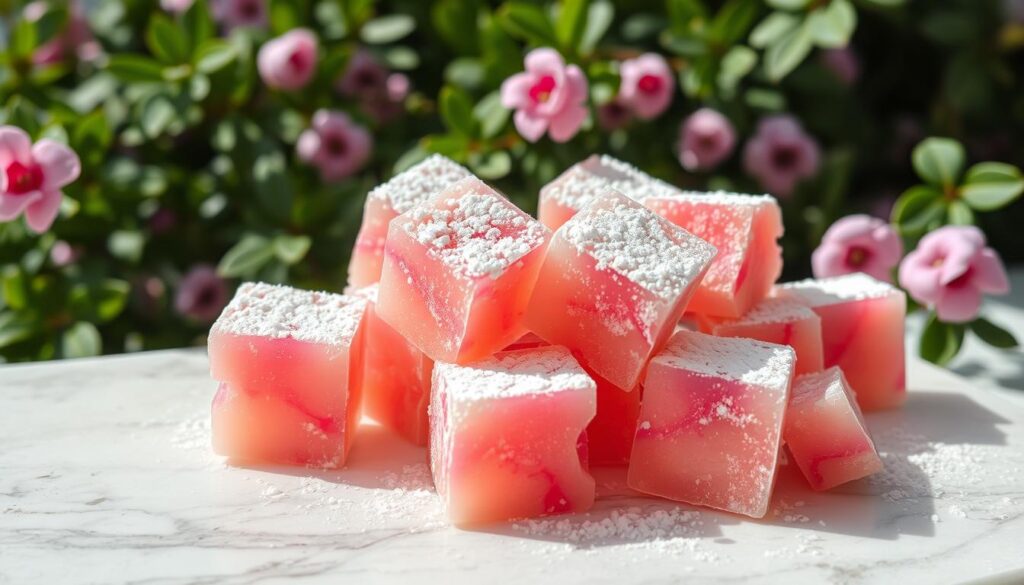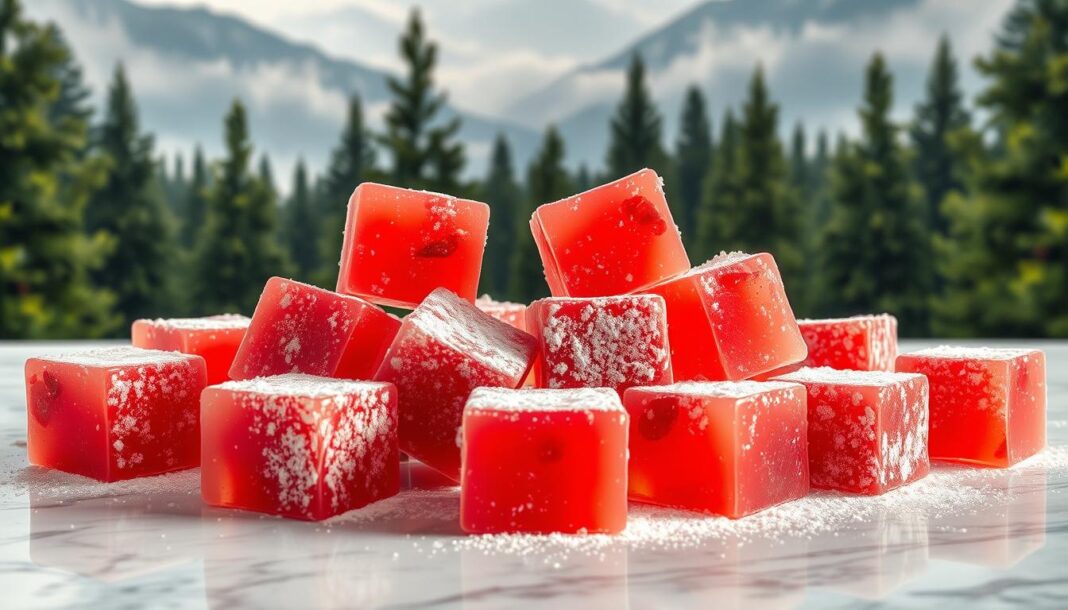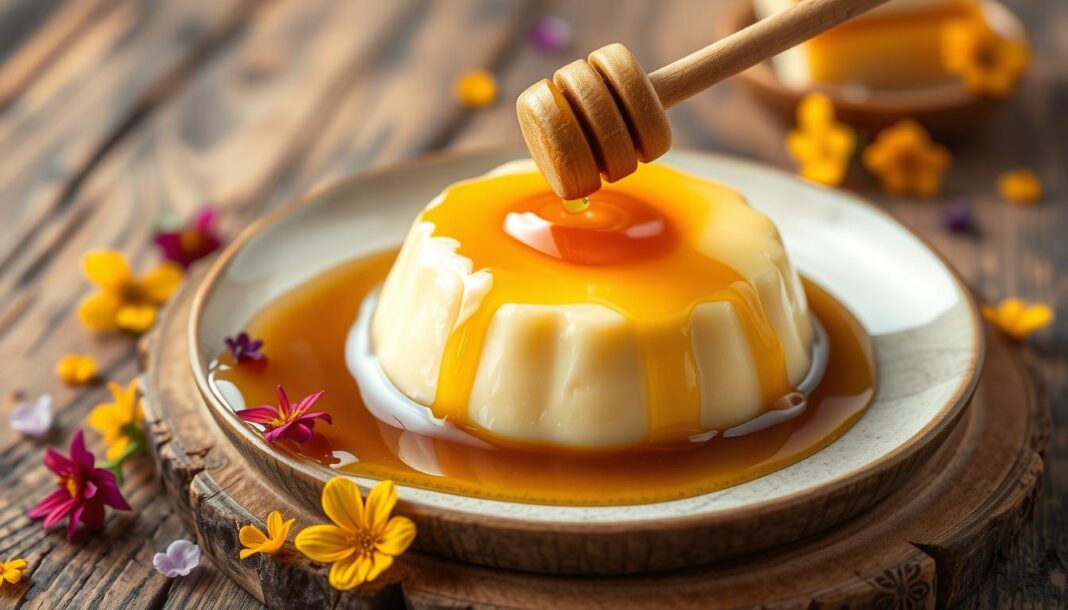We embark on a journey to explore the enchanting world of Turkish Delights, a confection that played a pivotal role in C.S. Lewis’s beloved Chronicles of Narnia series. In “The Lion, the Witch and the Wardrobe the White Witch uses these sweet treats to tempt Edmund, one of the four Pevensie children, into betraying his siblings.
These gummy treats, also known as lokum, have a texture between gumdrops and Jell-O, made by heating sugar and starch to create a gel. As we explore the historical origins of Turkish Delights and their cultural significance, we will also examine how they became one of literature’s most famous culinary temptations. For a deeper dive into their role in Narnia, visit Historical Foods for more insights.
The Magical Allure of Narnian Sweets
The allure of Narnian sweets, particularly Turkish Delights, has become an integral part of the Chronicles of Narnia‘s enduring legacy. In “The Lion, The Witch and The Wardrobe,” C.S. Lewis masterfully uses these confections to weave a tale of temptation and moral weakness.
Edmund’s Temptation in The Lion, The Witch and The Wardrobe
In the pivotal scene where Edmund Pevensie encounters the White Witch, she offers him enchanted Turkish Delights, symbolizing forbidden desires. This moment drives the narrative forward, showcasing the psychological impact of these sweets as a symbol of temptation. The White Witch’s use of Turkish Delights to entice Edmund represents the power of indulgence and the consequences of succumbing to temptation.
The Cultural Impact of Narnia’s Most Famous Treat
The 2005 film adaptation of “The Lion, The Witch and The Wardrobe” renewed interest in Turkish Delights among a new generation of fans, catapulting this regional confection to international recognition. The cultural significance of Turkish Delights in British literature is profound, demonstrating how exotic foods can be used as literary devices. As a result, fans of the series have sought out or created Turkish Delights to connect more deeply with the Narnia universe, creating a lasting culinary legacy.
By examining the role of Turkish Delights in “The Lion, The Witch and The Wardrobe,” we gain insight into the power of storytelling in shaping food culture and the enduring appeal of Narnian sweets.
Turkish Delights from Narnia: What Makes Them Special
As we explore the magical land of Narnia, we find that Turkish Delights are more than just a sweet treat; they are a gateway to understanding the story’s deeper themes. The enchanting world of Narnia, as depicted in The Lion, The Witch and The Wardrobe, has captivated audiences with its magical elements, including the infamous Turkish Delights. In this section, we’ll delve into what makes Turkish Delights so special, from their origins to their role in Narnia.
The Origin and Tradition of Turkish Delight (Lokum)
Turkish Delight, also known as lokum, has a rich history that dates back to the Ottoman Empire. Traditionally, lokum is made by heating sugar syrup and a cornstarch slurry mixture until it thickens into a gel. This gel is then flavored, often with rosewater, and sometimes includes add-ins like pistachios or walnuts. The traditional preparation methods of lokum highlight the careful balance of sugar syrup and cornstarch that creates its distinctive gel-like consistency. For more on the historical context of Turkish Delight, visit this insightful article.

Texture and Flavor Profile
The unique texture profile of Turkish Delights is characterized by their chewy yet tender consistency, sitting between a gumdrop and a jelly. The sugar and cornstarch mixture is crucial in achieving this texture. The flavor complexity of traditional Turkish Delights is explored through the use of rosewater, citrus, and sometimes pistachios or other nuts in authentic recipes. This blend creates a memorable and distinctive confection that has stood the test of time.
The White Witch’s Recipe vs. Traditional Versions
Comparing the White Witch’s enchanted version to traditional Turkish Delights reveals both similarities and differences. While traditional Turkish Delights are made with sugar, cornstarch, and flavorings like rosewater, the White Witch’s version is imbued with magical elements that make it irresistible. The Narnian version likely differs from authentic Turkish Delight, considering both the literary description and the film representation. This comparison highlights how the simple combination of ingredients can be transformed into something extraordinary.
Crafting Your Own Enchanted Turkish Delights
Embark on a culinary journey to recreate the enchanting Turkish Delights from Narnia in your own kitchen. With a blend of traditional techniques and a dash of magic, we’ll guide you through the process of making these delightful treats.
Essential Ingredients and Equipment
To start, you’ll need a few key ingredients and pieces of equipment. For authentic Turkish Delights, you’ll require sugar, cornstarch, citric acid, and flavorings such as rosewater or lemon. A reliable candy thermometer and a heavy-bottomed pot are crucial for achieving the perfect sugar syrup.
The necessary equipment includes a 9×9 inch dish lined with parchment paper, a whisk, and a measuring cup. Ensuring you have the right tools will make the process smoother and more enjoyable.
Step-by-Step Preparation Process
Creating the Perfect Sugar Syrup
Begin by combining sugar, citric acid, and water in a heavy-bottomed pot. Whisk until the sugar is fully dissolved, then let it simmer without stirring until it reaches 250°F on a candy thermometer.
Mastering the Cornstarch Slurry
In a separate jar, mix cornstarch and water until you get a smooth, cloudy concoction. This step is crucial for avoiding lumps in your lokum.
Combining and Cooking to the Soft Ball Stage
Slowly pour the cornstarch slurry into the hot sugar syrup while continuously whisking. Expect a bit of drama as the mixture thickens into a gel-like consistency. Continue cooking and stirring every 8-10 minutes until you achieve a medium-light amber shade.
Setting, Cutting, and Coating Your Turkish Delights
Once cooked, stir in your chosen food coloring and extract. Pour the mixture into a prepared 9×9 inch dish and let it set at room temperature for 5-10 hours. After it’s set, cut it into cubes and coat with powdered sugar for that classic Turkish Delight appearance.
Bringing Narnia to Your Kitchen: Expert Tips and Variations
As we conclude our culinary journey into the world of Narnian Turkish Delights, it’s clear that crafting these magical treats requires patience, precision, and a dash of creativity. To ensure success,temperature controlis paramount. Using acandy thermometeris crucial for achieving the perfect set and texture, as it guarantees the sugar reaches exactly 250°F.
When making Turkish Delights, orlokum, it’s essential tostir the mixture regularlyto prevent sticking and ensure even consistency. Pouring the slurry into the syrup slowly and whisking continuously will help avoid lumps. For the best results, resist the urge to rush the setting process; instead, let the lokum set atroom temperature.
For storage, bury your Turkish Delights in a mixture ofpowdered sugar and cornstarch(about a 2:1 ratio) within an airtight container. This will maintain freshness and prevent sticking. Homemade Turkish Delights are best consumed within 72 hours, as they tend to lose their texture and flavor over time.
Experiment withflavor variationslike berry-infused or traditional rosewater to create unique Turkish Delights. For dietary adaptations, consider corn-free or vegan alternatives that maintain the authentic texture and flavor. With these expert tips and variations, you can bring a touch of Narnia to your kitchen and make your culinary experience truly magical.


